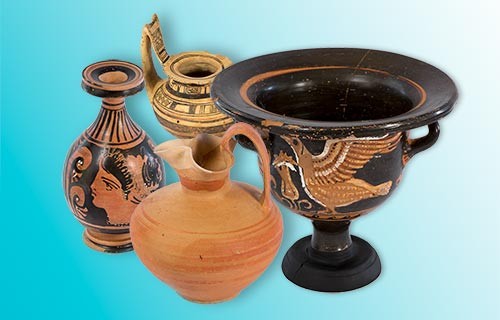Statuette
| Measures | h 17,6 |
| Place and chronology | Salentino - Tomb. 25. Second half of the 4th century BC |
The production of terracotta figurines continued throughout the Greco-Roman age in the Apulian territory, in particular in Taranto. The artisans made them using the mould technique, obtaining numerous reproductions from the original matrix.
Over time, the repertoire of terracotta figurines, originally depicting gods or mythological characters, was expanded with subjects inspired by the naturalistic world and by theatrical comedies and tragedies. There are numerous terracotta statuettes found in votive contexts and in the grave goods of ancient times.
Many statuettes of the Hellenistic world represented elegantly-draped female figures, sometimes in the act of dancing or giving votive offerings. They were characterized by a lively polychrome decoration, often no longer visible because it was carried out with a "cold" colouring technique subject to deterioration over time.

